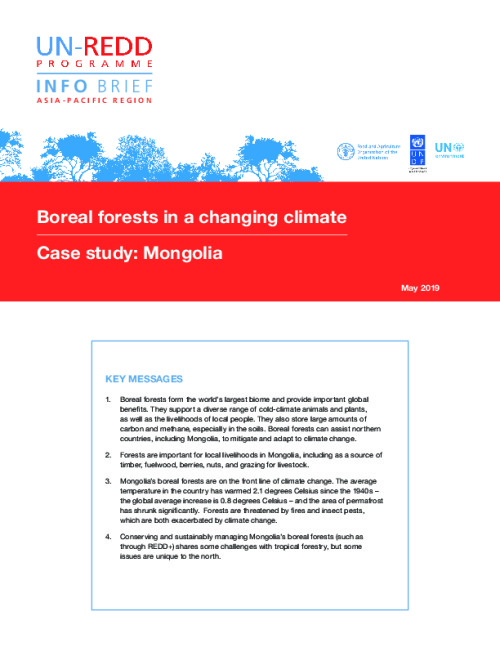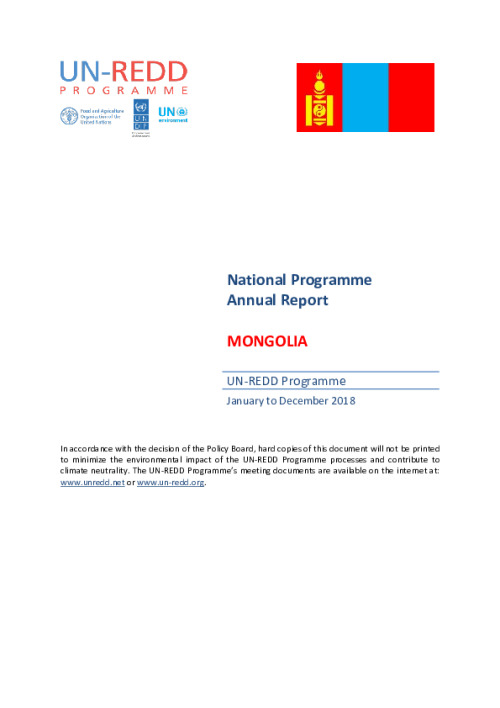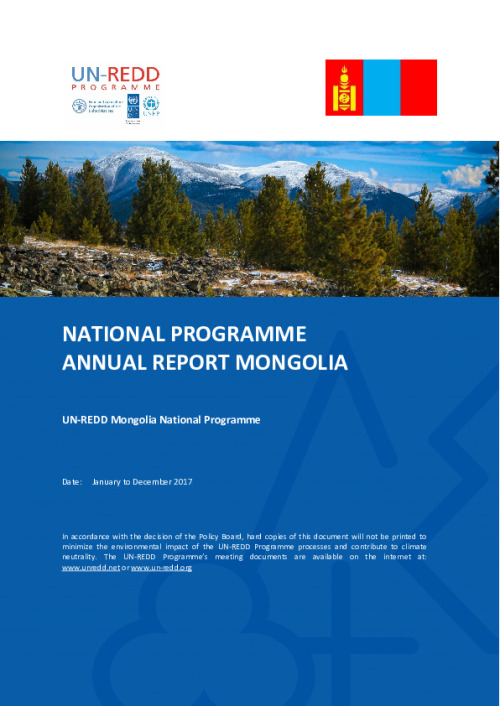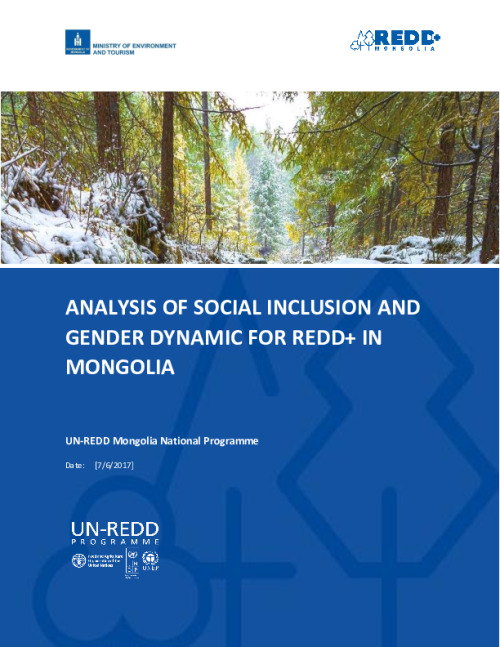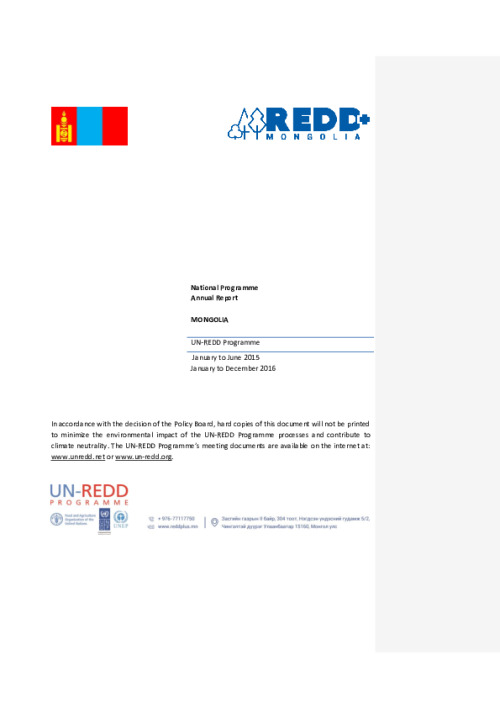National REDD+ Strategy/Action Plan (NS/AP): The national REDD+ programme has been drafted along with the action plan. They were informed by the latest study findings, including those on financing mechanisms and options for REDD+ implementation; recommendations for the wood-processing industry; corruption risk assessments; options for effective fire and pest management; identification of potential benefits and risks associated with proposed REDD+ PAMs; and gender-responsive and socially inclusive stakeholder engagement. The draft national REDD+ programme and action plan were further advanced through an extensive consultation process and active engagement of a core working group throughout 2018.
Forest Reference Emission Level / Forest Reference Level (FREL/FRL): A nationally endorsed FRL was submitted to UNFCCC for technical assessment in January 2018. It was then amended based on assessment recommendations and resubmitted in June 2018, entailing a complete set of compiled historical activity data and emission factors. The FRL was developed by a core group of technical specialists from key national institutions, whose capacities have been strengthened with UN-REDD support. The assessment team acknowledged that the information and data set used for Mongolia’s FRL were transparent, complete and overall in accordance with UNFCCC guidelines. In late November 2018, UNFCCC provided a draft assessment report, which is currently being reviewed.
National Forest Monitoring System (NFMS): Mongolia’s first comprehensive and multipurpose NFI in 2016 was updated in 2018 to include information on poorly stocked forest. The Ministry of Environment and Tourism (MET) made the decision to undertake an NFI on an ongoing, annual basis, covering at least 10 per cent of permanent NFI sample plots per year, and committed to allocate budget for the NFI under the MET forest management budget. Based on the raw data collected on the below-ground biomass stock of Mongolia’s dominant tree species, national research institutes developed a regionally specific biomass model. Data generated through these studies will help improve the accuracy of biomass and greenhouse gas emission estimates in the future. In October 2018, the Government formally approved a technical guidance document that makes Mongolia’s national land use and land-use change statistics compliant with the IPCC guidelines.
Safeguard Information System (SIS): Mongolia’s National REDD+ Safeguards Framework has been designed with stakeholder participation in accordance with the UNFCCC safeguards and national goals and circumstances, making full use of existing systems and institutions in the country. The SIS is set out in a two-volume report, ‘Mongolia’s REDD+ Safeguard Information System: Proposed Structure, Functions and Roles’, available in both English (vol. 1 and 2) and Mongolian (vol. 1 and 2). It includes five key components: goals and scope; potential benefits and risks, and measures to enhance/mitigate these; safeguards, relevant policies, laws and regulations; national safeguards clarification; and GRMs. An Excel version of the SIS database has been developed with relevant content and indicators and will potentially be integrated into an online database hosted by the Environment Information Centre (EIC).
Changes in key personnel, including technical advisers and the National Programme Director, presented challenges in 2018. The Programme Director was absent for almost five months due to changes in government structure and implementing partner (MET), causing considerable delays to the activities planned in the 2018 workplan. A fourmonth no-cost extension was requested and approved by the UN-REDD Executive Board to compensate for the delays caused by these changes.
Partnerships with relevant programmes run by institutions such as GIZ, the Asian Development Bank, and the FAO/ GEF forest programmes, have been effectively maintained. Representatives of GIZ and FAO/GEF projects continued to engage in coordination efforts through the Programme Executive Board (PEB). The national REDD+ programme process is informing the NDC update that is currently under way.
